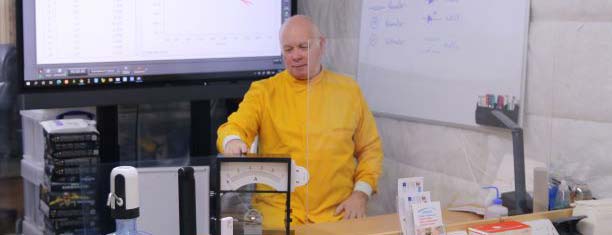Monday 29 March 2021
Friday 26 March 2021
Starting to print on the 3D printer some @pascoscientific diy metre stick torque set. I have ordered a Pasco one through @SciChemEdu with an Aluminium metre rule but I thought I would try out the wooden ruler version.
This is ideal for working out moments and is extremely accurate and very sensitive. Instead of the fulcrum that was designed I am using a modified file so that we can use the rotary motion sensor.
Monday 22 March 2021
Tuesday 16 March 2021
3D addons to science equipment
Just printed some 3D printed addons for the smartcart from . The reflective block is a bit too loose so we are working on a wider one to publish with a screw fixing.
Monday 8 March 2021
Back to Practicals
So glad to be back teaching the students face to face and getting back to letting them do the practical work. Starting today with titrations.
Sunday 28 February 2021
Teltron Tube
I have been doing a lot of work recently with students doing A level Physics looking at the discovery of the electron and how electrons and behave in a magnetic field. This teltron tube is set up with Helmholtz coils to do just that.On the left a low voltage supply heats a wire so electrons are given off, and then on the right a high voltage supply attracts the electrons and fires them across the tube as a beam of electrons.
Monday 8 February 2021
A Motor as a Generator
Working with a Westminster motor. The Motor can either be driven by a battery or can be spun and then the output measured on a galvanometer. Then the motor works like a generator, in this case a DC generator, and we can use Flemings Right Hand Rule to work out the direction of flow of the current Second Finger knowing the motion (Thumb) and the Direction of the magnetic Field First Finger.
Subscribe to:
Posts (Atom)
Orbitals
GCSE Chemistry: Trying to work out how those electrons are arranged in the orbitals and if any pattern can be seen. Working from a periodic ...

-
Negative feedback is a difficult concept to try and get over so I tried using a balance board and the @pascoscientific smart cart strapped...
-
Getting a classic set of results for the titration of NaOH and HCl is not that difficult but it is nice when we can get students to this ...
-
Mechanics: the grand meeting of Maths & Physics! Using strobe light & a ball drop for gravity-acceleration calculations and SUVAT fo...















